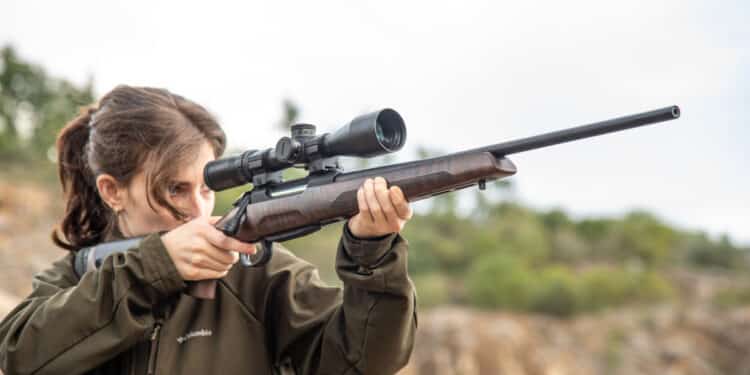Three variants of the new Sabatti Rover bolt-action rifle line are specifically dedicated to the most demanding hunters: the Rover Hunter, Hunter Classic and Hunter Classic Pro offer a sublime combination of high performance and top Italian aesthetics and style.
by Pierangelo Tendas
One of Italy’s oldest firearms manufacturer and potentially the oldest dedicated barrel maker in the world, with over 300 years of experience, Sabatti S.p.A. introduced its first line of dedicated bolt-action rifles in 1993: dubbed “Rover”, the product line would remain in production for approximately twenty years and establish itself as one of the first European examples of what American companies had done with the likes of the Remington 700, that is, a basic action iterated in a number of variants, each conceived for a specific use or set of uses.
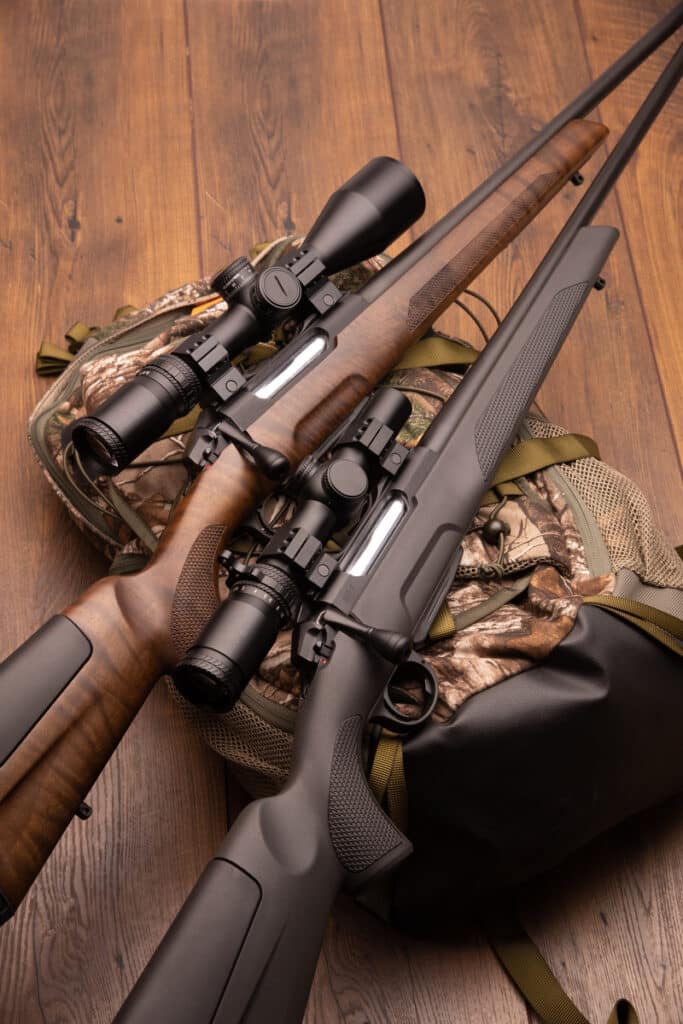
The Sabatti Rover rifles were built around a Mauser type action, with two sturdy locking lugs, and an all-steel receiver, cold hammer forged barrel, and bolt. While some variants of the Rover series were conceived for sport shooting, the main focus of the line was hunting: calibers available included all the most popular north American and European hunting cartridges, and some versions were available in African big game calibers. Production quality was so good that most original Sabatti Rover rifles are still out there, on the line, in the hands of countless hunters and shooters who bought them originally when they were in production.
In the past fifteen years, however, Sabatti’s business focus shifted from hunting rifles and shotguns to long-range rifles for competition shooting and tactical applications. Fifteen years is a long time to build and consolidate a full new background and know-how: new technologies, new materials, new engineering, the pursuit of new technical solutions in search for greater accuracy and performance. When the time came to distill such a treasure of experiences in a new series of rifles that would get all users’ needs covered – from hunting, to sport shooting, to patrol and tactical, the closest anybody in Europe ever got to a Remington 700 type of experience! – it just made sense to homage the Sabatti tradition by giving it a classic name, an official appointment as the heir of the Sabatti tradition of gunmaking.
The New Rover
Sabatti introduced the new and improved Rover series on the European market in the second half of 2021, and on the U.S. market at the 2022 SHOT Show in Las Vegas. Featuring an entirely new action, precision engineering and manufacture, and a slew of other Sabatti signature features, the new Rover family includes, as of today, 13 different variants – definitely something to please everybody.
Of these 13 variants – or to be more specific, of the ten out of 13 entries in the family that are solely or partially intended for hunting purposes – three are dedicated to a specific breed of hunters, those who don’t want to give up elegance and style even in the toughest hunting scenarios: the Sabatti Rover Hunter, Rover Hunter Classic, and Rover Hunter Classic Pro.
Like all the entries in the new Sabatti Rover series, the Hunter, Hunter Classic, and Hunter Classic Pro are based on the same barreled action. First and foremost, the common feature of all the new Sabatti Rover rifles is the barreled action: gone is the old Mauser-style action, in favor of a bolt very similar to – but not exactly the same as – those found on Sabatti’s modern long-range shooting rifles based on the Blizzard action. These are machined out of special steel, with three sturdy locking lugs, and heat-treated, hardened and tempered, quenched, the chrome-lined to the exact level of thickness to match the tolerances of the receiver, itself machined out of a solid billet of 7075-T6 aluminum alloy and hard-anodized in black.
A departure from the all-steel construction of the Mauser action of the early Rover rifle, this makes the new rifles lighter, extremely fast, smooth and silent to operate, and offers a superior level of resistance to corrosion and wear.



Features
Like Sabatti’s long-range rifles based on the Blizzard action, the new Rover actions offer a 60-degree bolt throw to keep the shooter’s hand well away of the eyepiece of any scope when chambering a round, and a threaded charging handle allowing the bolt knob to be removed and replaced with compatible aftermarket alternatives at the shooter’s will.
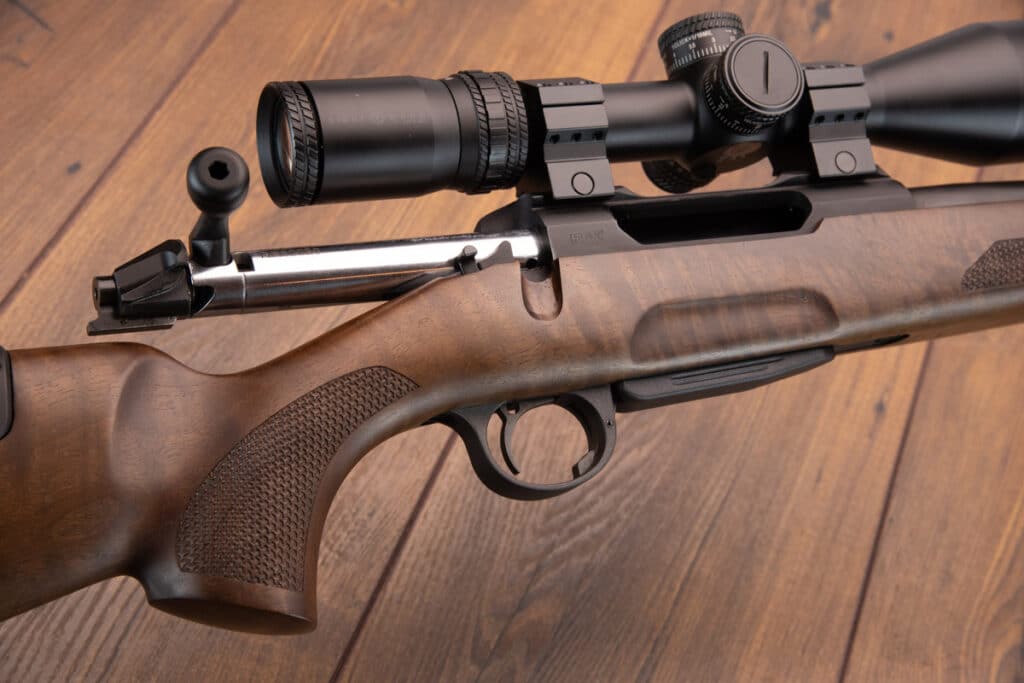
Other features include a bolt stop located to the left of the receiver and a safety right behind the charging handle, at thumb reach, providing three positions – one of which blocks the trigger and sear while still allowing the bolt to be cycled, so that the chamber can be cleared in full safety.
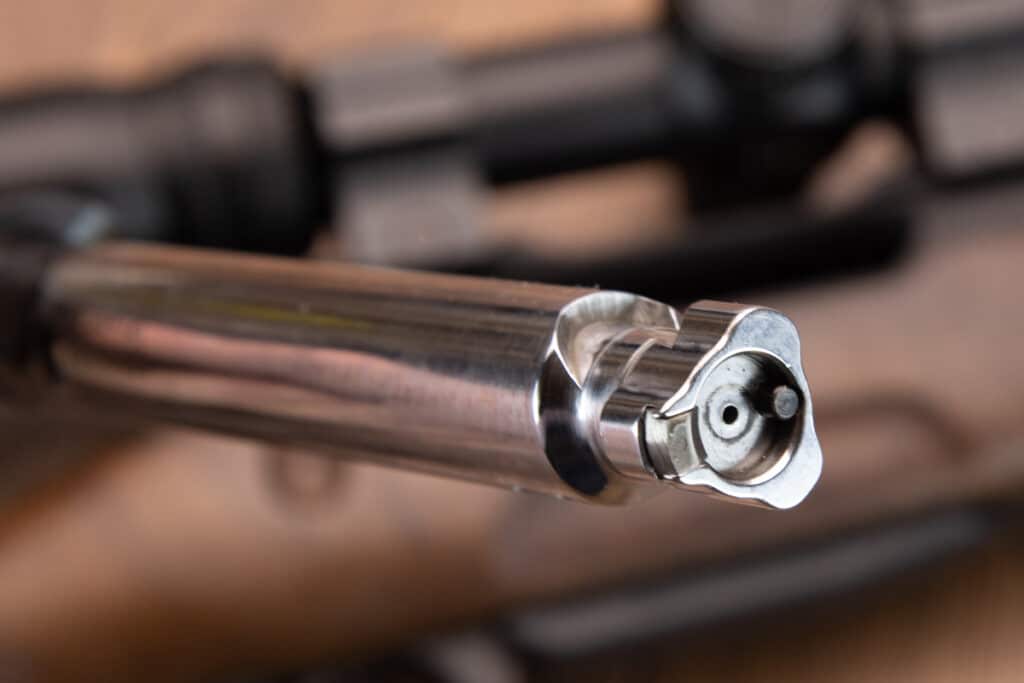
Unlike the Sabatti Blizzard action, the Rover action cocks the striker on opening and features a cam located on the front of the bolt, interacting with a screw for primary extraction. That screw is arguably the most wear-prone part of the bolt, but easily replaceable. A separate extractor, manufactured out of a special steel alloy – which special steel alloy, exactly, is a Sabatti industrial secret – is located on the bolt face.
Barrel
The Sabatti Rover Hunter, Rover Hunter Classic and Rover Hunter Classic Pro come with the shooter’s choice of 20-, 22- or 24-inch cold-hammer forged, blued barrels, manufactured entirely by Sabatti, all with a 5/8-inch diameter, threaded muzzle for accessories such as flash hiders, muzzle brakes, or sound suppressors. Indeed, the Rover Hunter Classic Pro model comes from the factory with a pre-installed, easily removable muzzle brake instead of a simple thread protector, more specifically the company’s own Jet-Brake, of Sabatti’s own design and manufacture. As of today, none of the Rover rifles feature Sabatti’s world-famous, proprietary MRR multi-radial rifled barrels, opting for standard rifling profiles instead.

In all models, the barrel and the action are held together by a set of three screws, which makes rebarreling of the Rover action very easy – even more so since headspacing is provided by the interaction between the locking lugs and the barrel extension, so that a rebarreled new-generation Sabatti Rover rifle will not need a headspace check or adjustment.
Changing the barrel of your new Sabatti Rover rifle (to change caliber or shift to a different barrel length, given how unlikely it is that you’ll ever shoot the rifling out on these barrels) can be done by any shooter with the right equipment, including a good quality torque wrench. Sabatti, however, recommends that shooters wishing to rebarrel their Rover rifles seek the assistance of a competent gunsmith, as the screws holding the barrel and receiver together are manufactured out of steel and tightened to a very specific level of torque, and over tightening them could cause damage to the alloy receiver.
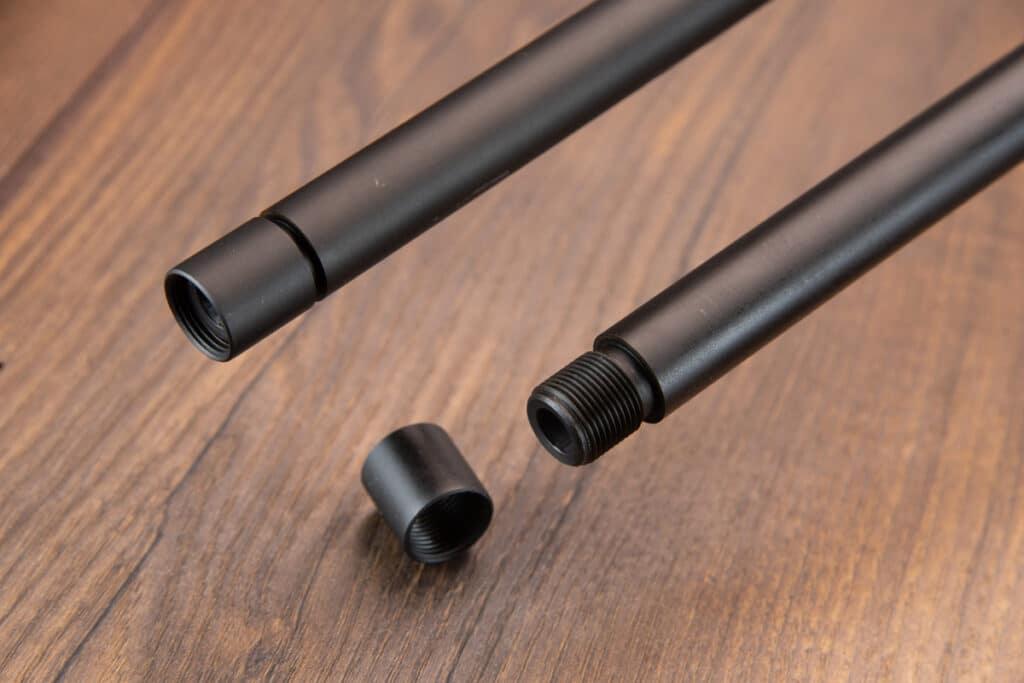
Stock
Aside from the barrel length and the presence of a factory muzzle brake on the Rover Hunter Classic Pro model, the Sabatti Rover Hunter rifles can be told apart by the factory stock. The baseline Rover Hunter comes with a dark grey fiberglass-reinforced polymer stock; the Hunter Classic model features an oil-finished walnut stock; the Hunter Classic Pro model is built around a walnut stock with a patented Optowood coating, a unique feature of the Italian gun industry.
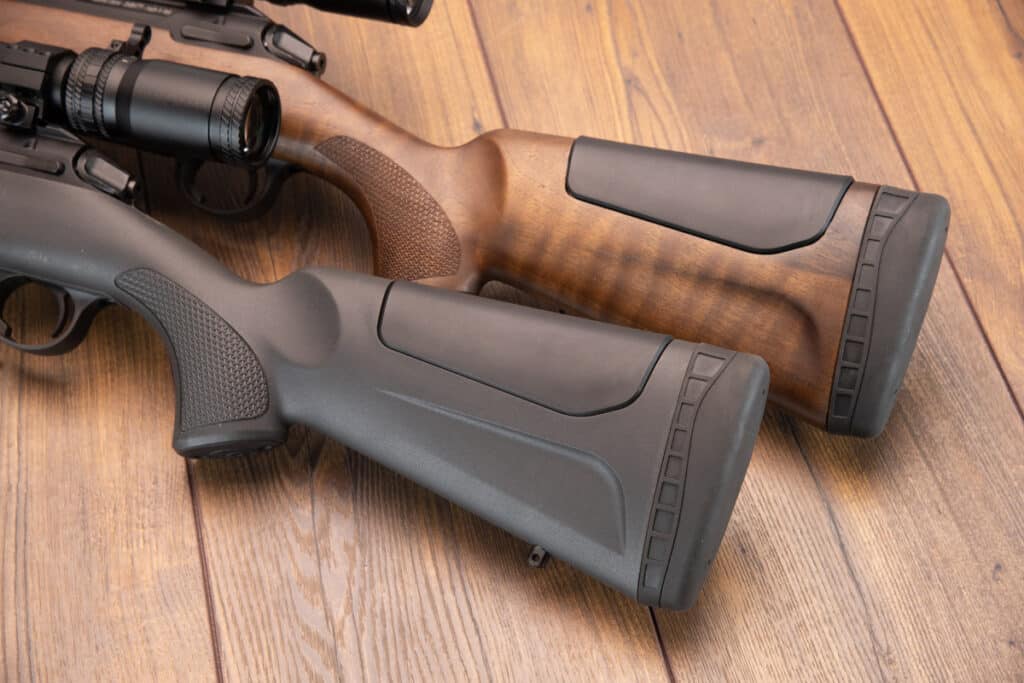
All stocks are of the same style, with a straight pistol grip and checkered, slip-proof surfaces on the grip and handguard; a slight lightening on both sides around the magazine well area for easier reloading, and a black synthetic pad and cheek riser that allows the stock height and length of pull to be adjusted through a set of shims and inserts.
Other features of the stocks include two standard sling swivel studs, and two M-LOK slots carved in a steel plate embedded underneath the handguard, for bipod mounts.
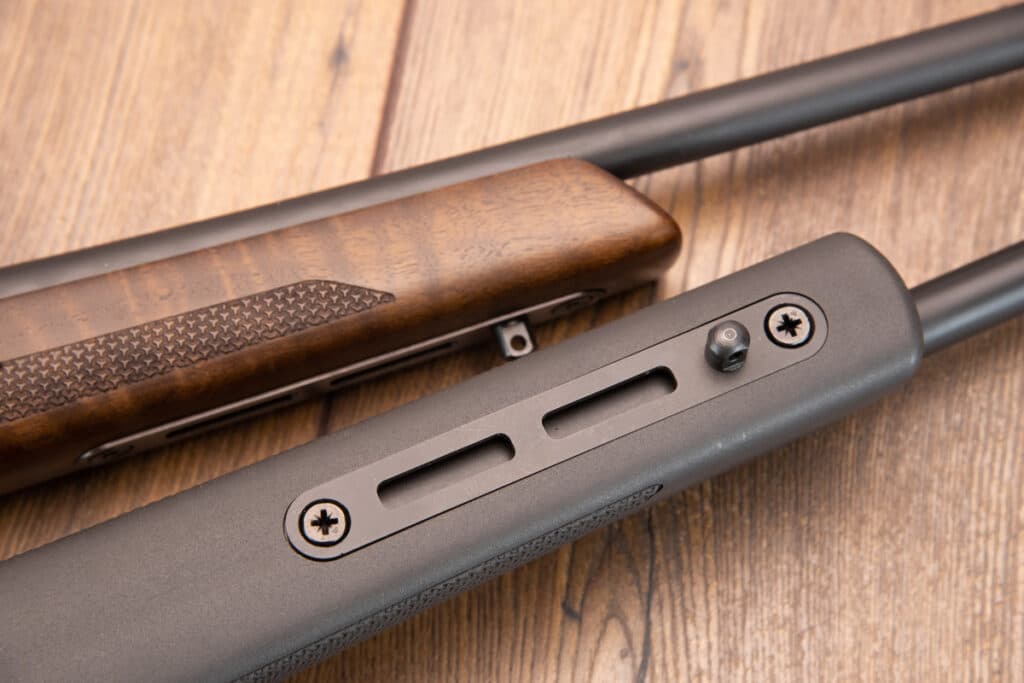
The stocks are secured to the barreled action with a set of two screws located respectively behind and ahead of the action. The stock features an embedded bedding – the new Rover family does without the quintessential “suspended action” of Sabatti’s long-range tactical rifles – but with no pillars. This technically means that stock interchangeability is total across the line, not just between the three Rover Hunter models, but among all, or almost all,the new Sabatti Rover family of rifles.
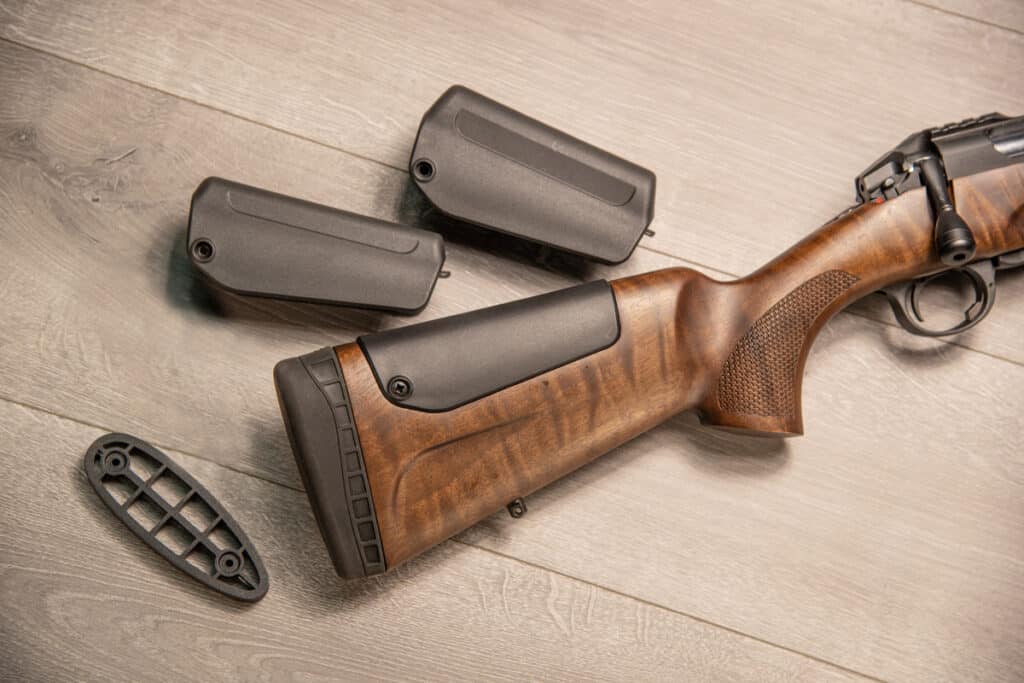
The screws are tightened to a specific level of torque depending on the version – 53.1inch-pounds for the rear screw and 62 inch-pounds for the front screw for the wooden stocks; 70.8 inch-pounds for the rear screw and 79.7 inch-pounds for the front screw for the polymer stocks – and as long as those levels of torque are respected, changing your Rover rifle stock will not result in loss of accuracy or even loss of zero… even more so because the three Rover Hunter rifles do not come with iron sights, opting instead for a pair of Picatinny rail segments machined directly on top of the alloy receiver, providing a sturdy mounting platform for wide array of optics.
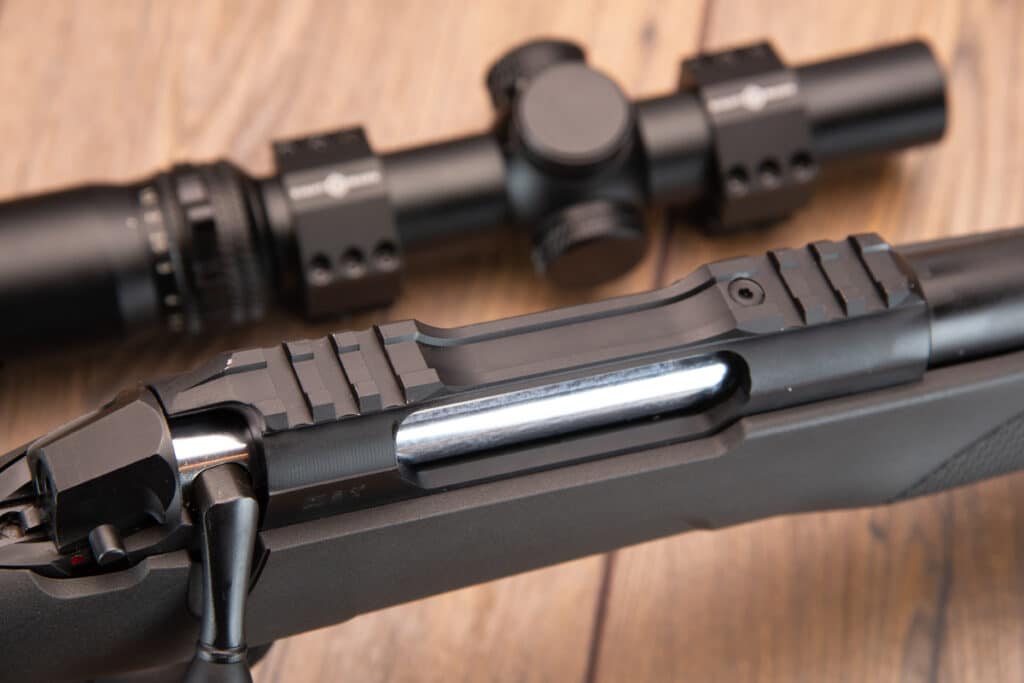
Shooters should, however, know those two Picatinny rail segments are not precisely spaced, as they would be if the rail was a continuous segment. This means that, should a shooter remove a scope from their Rover rifle and install it to another firearm that has a full-length, continuous rail, one of the two rings may have to be moved slightly ahead or rearwards to make it fit.
Calibers
At the time of this article, the Sabatti Rover Hunter, Rover Hunter Classic, and Rover Hunter Classic Pro rifles are available in eight popular European and north American hunting calibers: 243 Winchester; 270 Winchester; 6.5×55 Swedish; 6.5 Creedmoor; 7mm Remington Magnum; 308 Winchester; 30-06 Springfield; and 300 Winchester Magnum.
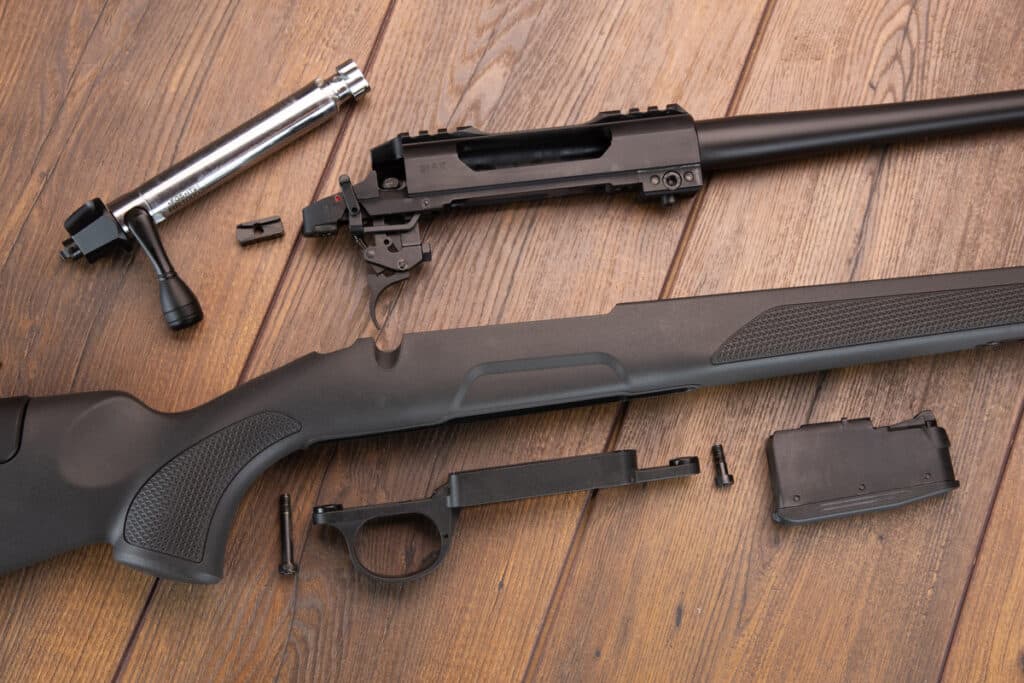
Two additional calibers – 222 Remington and 223 Remington – will be made available in early Summer 2023; quite the news, considering how those two light varmint calibers have been noticeably absent from Sabatti’s production for a number of years now. All the Sabatti Rover Hunter rifles feed through a proprietary detachable magazine, offering a capacity of three, four or five rounds depending on calibers, with the capability to hold an additional round in chamber.
Trigger
The Sabatti Rover Hunter, Hunter Classic and Hunter Classic Pro come from factory with a two-lever trigger of Sabatti’s own design and manufacture, assembled using precision laser-cut components. A set trigger (or stecher, for those who like to use European terminology) is available as an option.
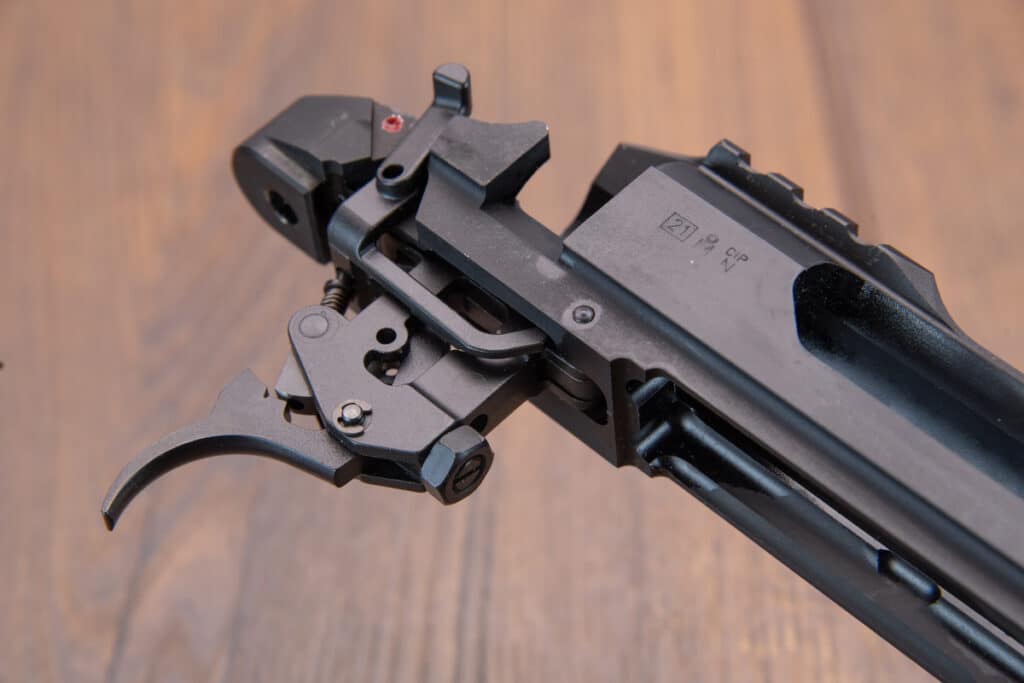
The factory trigger is set at a maximum break weight of 2.6 pounds. By removing the barreled action from the stock, the shooter can access the trigger assembly and lighten it to approximately 1.3 pounds. Sabatti, once again, strongly recommends that shooters wishing to adjust the trigger on their Rover rifles seek the assistance of a qualified gunsmith.
Wrap Up
As of today the marketing of Sabatti rifles in the United States has temporarily been halted, pending the selection of a new importer and distributor, which should take a few months. There’s no doubt, however, that when the moment comes, the Sabatti Rover Hunter rifles will prove a success on the U.S. market as they’re proving themselves to be in Europe, where they are sold at a manufacturer’s suggested retail price of 990,00€ for the baseline Rover Hunter, 1.300,00€ for the Rover Hunter Classic, and 1.470,00€ for the Rover Hunter Classic Pro.
Specifications:
| Make | Sabatti Armi S.p.a., Via Alessandro Volta, 90 – 25063 Gardone Val Trompia (BS) – Italy |
| Model | Rover Hunter, Rover Hunter Classic, Rover Hunter Classic Pro |
| Type | Bolt-action rifle |
| Caliber | 222 Remington 5.56×56mm (223 Remington) 243 Winchester 270 Winchester 6.5×55 SE 6.5 Creedmoor 7mm Remington Magnum 30-06 Springfield 7.62×51mm (308 Winchester) 300 Winchester Magnum |
| Action | 7075 T6 aluminum alloy action, three-lugs steel bolt |
| Trigger system | Two lever standard trigger, set trigger on demand |
| Safety | Three position manual safety, blocking both trigger and sear |
| Capacity | 3+1, 4+1 or 5+1 rounds in detachable proprietary magazine, depending on caliber |
| Sight system | MIL-STD 1913 Picatinny rail segments for optics mounts machined on the receiver |
| Barrel length | 20in, 22in, or 24in, with 5/8in muzzle diameter, M14×1 muzzle thread |
| Total length | 40in, 42in, or 44in, depending on configuration |
| Weight (empty) | 6.2lb to 7.3lb, depending on configuration |
| Materials | Polymer (Sabatti Rover Hunter), Oil-finished (Sabatti Rover Hunter Classic) or Optowood coated walnut stock (Sabatti Rover Hunter Classic Pro); machined 7076-T6 lightweight aluminum alloy receiver; machined steel bolt; laser-cut steel trigger; cold hammer forged steel barrel |
| Finishes | Matte black metal surfaces |



